Particle Colliders – Accelerating Innovation
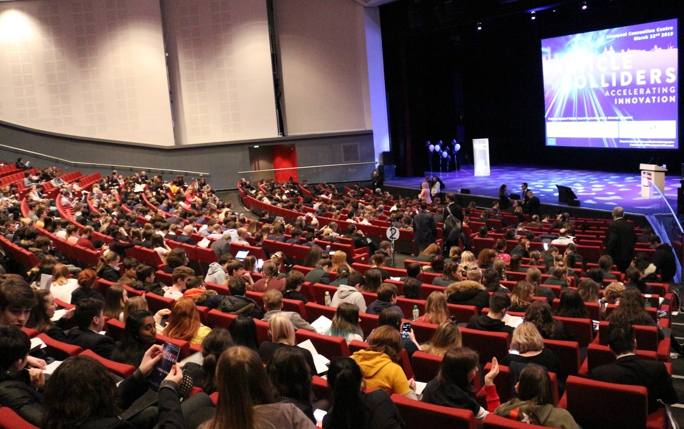
The Liverpool Physics Department hosted an international Symposium that attracted almost 1,000 delegates on 22 March 2019 at the Liverpool Arena and Convention Centre. The event showcased the science and technology opportunities related to the Future Circular Collider (FCC) study, a potential £20billion successor to the Large Hadron Collider.
The FCC study is an international scientific collaboration of more than 130 institutes, including the University of Liverpool, and led by CERN. It is developing design options for a potential higher performance particle collider to extend the research currently being conducted at the Large Hadron Collider, once it reaches the end of its lifespan. The FCC requires advances in many technology areas that can then also benefit other applications. Accelerators are already used in many areas outside of fundamental research including proton beam cancer therapy, non-destructive testing and the development of new materials for the telecoms industry.
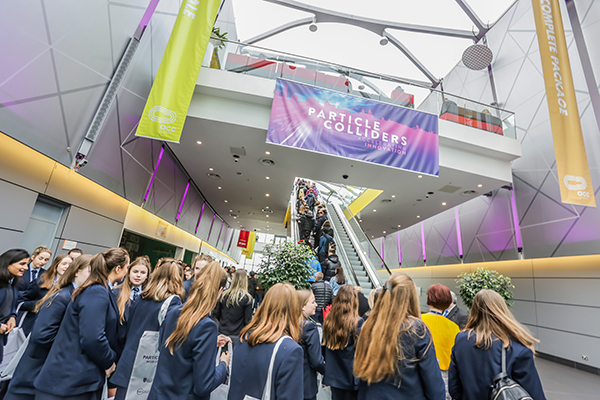
The symposium took place at the Arena and Convention Centre Liverpool.
The `Particle Colliders: Accelerators of Innovation’ symposium featured several keynote talks, an industry exhibition, a careers fair for our students, an industry-academia co-innovation workshop, as well as hands-on activities for high school children from England’s North-West to explain accelerator science.
All talks were live-streamed and on display at partner institutions across Europe, including the synchrotron light source ALBA in Spain, CERN in Geneva and KIT in Karlsruhe, Germany. This made the Symposium a true pan-European event that encouraged participation via social media.
All talks were recorded and are now available via the event website.
In addition to the talks, dozens of companies showcased their latest products in an industry exhibition which followed the morning talks. The exhibition also served Liverpool physics students as a unique careers fair. They had their normal modules replaced by this event and found an ideal opportunity to discuss employment opportunities in different sectors. A wide range of high tech companies joined the event and provided insight into where their physics degree might take them to next.
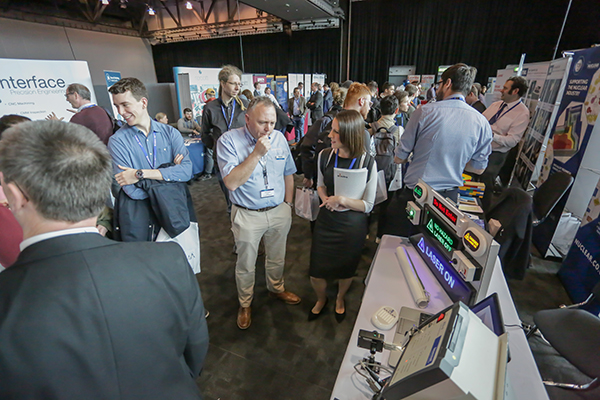
Industry exhibition.
Amongst the exhibiting companies were power supplier manufacturer FOTON from Czech Republic, vacuum equipment manufacturer Edwards, STFC, Lasermet, Leybold, STS Defence, TMD Technologies and TÜV SÜD Nuclear Technologies.
In parallel to the industry exhibition, hands-on demonstrations engaged hundreds of high school students in the technologies behind FCC. This included CERN’s interactive LHC tunnel which came for the first time to the UK. A true centre-piece of the hands-on physics fair, the LHC tunnel allowed children to play ‘proton football’ and smash particles at high energies. If energy and direction were well-chosen, they could even create a Higgs particle!
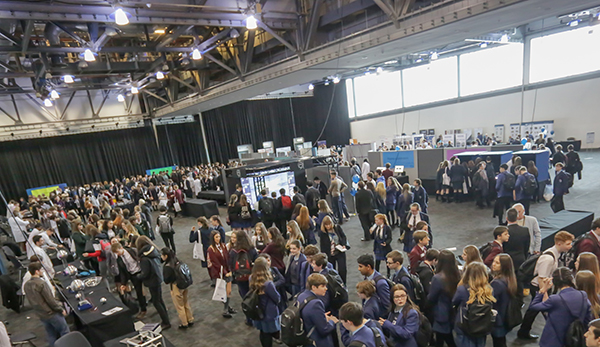
The event featured a number of interactive demonstrations for hundreds of high school students.
More than a dozen different other activities, each one offered several times in parallel, were available to the students. This included the Plasmatron, an interactive game explaining the physics behind plasma accelerators, salad bowl accelerators showing how high voltages can be generated, the augmented reality accelerator acceleratAR that turns paper cubes into components of a particle accelerator, and cryo-experiments that turned flowers into glass-like objects.
Furthermore, the event featured Tactile Collider which was developed by experts from the Cockcroft Institute (Manchester and Liverpool) to explain accelerator technology to visually impaired. This novel project uses 3D-printed magnets, whole body learning and ideas from an immersive zombie game app to communicate science, making it accessible to visually impaired and sighted students alike.
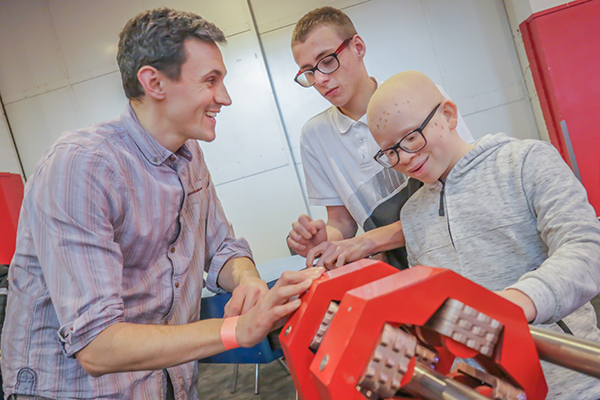
Tactile Collider allows learners to develop their understanding of accelerators by touch.
RNIB Connect Radio's Simon Pauley spoke with the department’s Dr Chris Edmonds and Professor Carsten Welsch the day before the event and you can listen to the interview here.
The entire day was made inclusive for VI children and for example all talks were supported by a narrator who explained the slides on display via Bluetooth headset to them.
The day was completed by an industry-academia co-innovation workshop in the afternoon. It explored the exciting opportunities that the technology R&D around the FCC study presents for industry involvement. Discussions across the various working groups were motivated by FCC, but not limited to particle accelerators at all – the aim was to identify common ground for joint R&D across disciplinary boundaries.
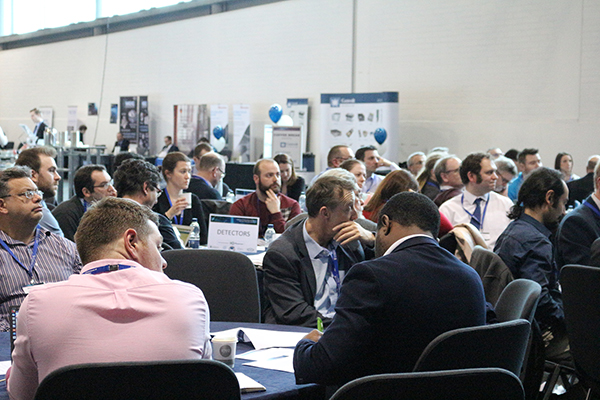
Co-Innovation Workshop.
Short talks about FCC-related areas for innovation, successful technology transfer projects at CERN and current funding opportunities stimulated interesting discussions amongst the nearly 100 participants. All presentations are now also available via the workshop homepage.
Finally, the Symposium saw the international launch of the new film “Busy bees and might magnets – From the Higgs to Honey: What's all the Buzz about Particle Accelerators?” – The three minute clip shows how accelerator technology can help find honey launderers!
You can watch this now on YouTube.